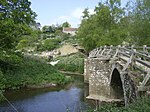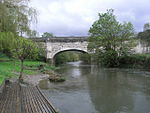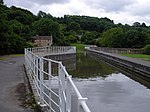Freshford railway station

Freshford railway station is a railway station serving the village of Freshford, Bath and North East Somerset, England. It also serves the nearby village of Limpley Stoke in Wiltshire. The station has two platforms and is served by Great Western Railway. For many years the station had a notable flower garden maintained by the Vaisey sisters. This later faded but in 2007 local residents renovated the garden and planted new flowers in the memory of the Vaisey sisters. A few weeks later staff from Network Rail cut down all the flowers.In February 2006, Platform 2 at Freshford was raised by 30 cm to reduce the large stepping gap between the train and the platform. It had been lowered in 1988 as part of the realignment of the track through the station to allow trains to pass at a faster speed. At the same time the platform was raised, the station also received additional improvements including better lighting and the construction of a new waiting shelter.
Excerpt from the Wikipedia article Freshford railway station (License: CC BY-SA 3.0, Authors, Images).Freshford railway station
Station Road,
Geographical coordinates (GPS) Address Nearby Places Show on map
Geographical coordinates (GPS)
| Latitude | Longitude |
|---|---|
| N 51.342 ° | E -2.301 ° |
Address
Station Road
Station Road
BA2 7WQ
England, United Kingdom
Open on Google Maps









